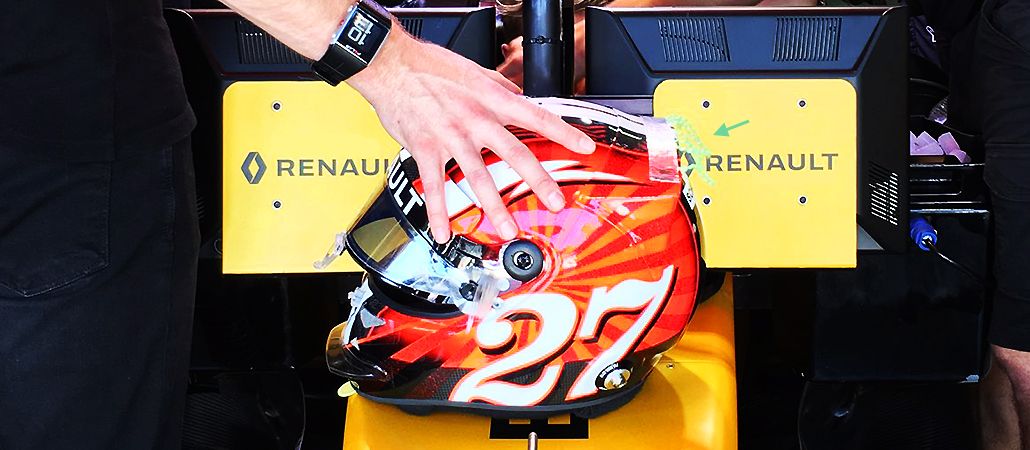RENAULT’S 2018-SPEC F1 HAIRDO
Late into the current Formula 1 season, teams have now firmly shifted their attention towards preparing next year’s campaign. Although the sport's technical regulations will remain fairly the stable, the introduction of the Halo protection system is set to have a major impact on airflow structures around the cockpit.
That’s why F1 outfits have been busy running a carbon spec of the Halo across free practice sessions coupled with measuring devices in the area to gather valuable data for the aerodynamicists. At Interlagos, the Renault R.S.17 was equipped with seven Pitot sensors underneath the roll-hoop air intake... although the car did not have the Halo on.

©F1i & Renault F1
The sensors were actually placed there to compare the two helmet designs sported by Nico Hulkenberg at the weekend. Indeed, the former Le Mans 24 Hours winner raced two different lids during Friday practice: one was fitted with an aero device while the second version did not feature any. In order to compare the airflow structure, wool tufts were taped to both helmets.
The old-school technique makes it possible to visualise airflow direction as cameras record how the tufts move around. These are used to check and evaluate the causes of a specific phenomenon rather than as a search tool such as windtunnel or CFD (computational fluids dynamics) work. The more conventional flow-viz paint could not be used in this specific case given how close the airbox sits, which means running the risk of having paraffin entering the engine.

 '
'





